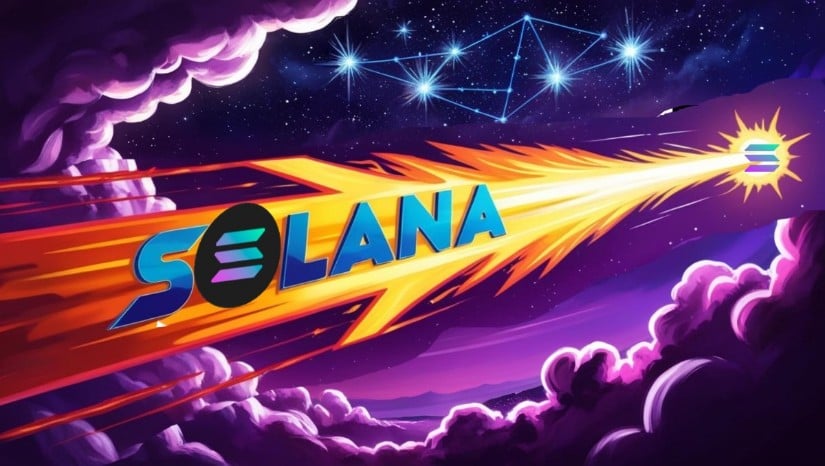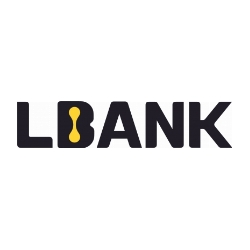Latest DePIN Token Launch News
View Token Launch Projects
4 days ago
IoTeX Launches Staking Program on DePINscan to Enhance User Participation in DePIN Ecosystems
On May 21, 2025, IoTeX, a prominent Layer 1 blockchain designed for decentralized physical infrastructure networks (DePIN), officially launched its Staking Program on DePINscan. This unified staking interface aims to empower users by providing a simplified and trusted gateway to support and earn from innovative DePIN ecosystems. The program initially offers native staking support for Hivello and Functionland, both of which are incubated by IoTeX, along with integrated staking for other projects like Filecoin, Fluence, Swan, and Aethir, in partnership with technical collaborator Parasail.
The launch of the staking program is a significant milestone as it aligns with the maturation of DePIN from a nascent concept to a fully developed industry. Qevan Guo, CTO and Co-Founder of IoTeX, emphasized that this initiative facilitates scalable user participation in real-world infrastructure projects. DePINscan is not merely a dashboard; it represents a gateway to the future of Web3 utility, providing visibility into over 100 projects and an ecosystem value exceeding $1 billion. With the introduction of native and cross-chain staking, token holders can now easily delegate to real-world networks, track rewards, and support aligned DePIN projects.
The integration of high-profile projects like Filecoin and Aethir highlights IoTeX's commitment to fostering open collaboration and chain-agnostic support. All staking operations are secured by Parasail’s robust infrastructure, ensuring reliability and scalability for future partners. Dom Carosa, co-founder of Hivello, expressed enthusiasm about the staking program, noting it as a significant opportunity for users to engage with decentralized infrastructure intuitively and rewarding. IoTeX plans to continue onboarding new projects and providing extensive support through marketing, infrastructure tools, and cross-chain integrations, inviting developers and builders to join their staking program.

5 days ago
Hivello's $HVLO Token Listed on DePINscan, Enhancing DePIN Accessibility
Hivello, a decentralized physical infrastructure network (DePIN) aggregator, has announced the listing of its token $HVLO on DePINscan, a prominent analytics platform for DePINs on IoTeX. This strategic move is set to enhance Hivello's visibility within the DePIN and IoTeX ecosystems, allowing users to access information about Hivello and participate in staking directly on IoTeX's Layer 1 blockchain. With the DePIN market projected to grow significantly, this listing positions Hivello at the forefront of a rapidly evolving sector, catering to both crypto enthusiasts and newcomers interested in decentralized infrastructure.
The partnership with IoTeX is a pivotal development for Hivello, as it not only increases the accessibility of $HVLO but also provides users with essential tools and incentives to engage with decentralized networks. Domenic Carosa, Chairman of Hivello, emphasized the importance of this collaboration, stating that it aligns with their mission to onboard Web2 users into the Web3 space. The integration with DePINscan is expected to facilitate a smoother transition for users looking to explore and participate in the DePIN ecosystem, which boasts over 13 million active devices contributing daily.
As DePIN adoption accelerates globally, the collaboration between Hivello and IoTeX signifies a major step toward expanding participation in decentralized infrastructure. Qevan Guo, CTO and Co-Founder of IoTeX, highlighted that this launch represents a convergence of technical innovation and strategic partnerships, ultimately making DePIN more accessible to a broader audience. With the market anticipated to soar from $50 billion in 2024 to $3.5 trillion by 2028, Hivello is well-positioned to capitalize on this growth, fostering a new wave of participation in decentralized technologies.

6 days ago
Qubetics: The Next Crypto to Hit $1?
As the digital asset market begins to recover from recent volatility, investors are shifting their focus from speculation to real-world utility and long-term adoption potential. One standout project gaining attention is Qubetics ($TICS), which positions itself as the world's first Web3 aggregator. By combining asset tokenization with a robust marketplace, Qubetics aims to convert physical and digital assets into tradable digital tokens, thus addressing one of blockchain's most pressing challenges. This innovative approach not only enhances accessibility to various asset classes but also empowers businesses and individuals to engage in seamless trading, making Qubetics a key player in the race to hit $1.
In addition to Qubetics, other tokens like Kaspa (KAS) and Theta (THETA) are also gaining traction. Kaspa utilizes a high-throughput blockDAG model to achieve rapid transaction speeds, making it a strong contender for decentralized technology. Meanwhile, Theta focuses on creating a decentralized content delivery network for video streaming, rewarding users who contribute bandwidth. Both projects are backed by passionate developer communities and are carving their own paths towards mass adoption, showcasing unique narratives that set them apart in the competitive crypto landscape.
The Qubetics presale is currently in its 35th stage, with over $17 million raised and a growing number of early adopters. The presale operates on a 7-day cycle, creating continuous price momentum ahead of the mainnet launch in Q2 2025. As the demand for Qubetics continues to rise, it is increasingly viewed as a leading candidate for the next crypto to hit $1, driven by its focus on real-world utility and strategic growth. With its innovative marketplace and cross-chain compatibility, Qubetics is not just another crypto project; it is a potential disruptor in the financial landscape, making it an attractive option for investors looking for long-term gains.

18 days ago
Arctic Pablo Coin: A New Era for Meme Coins with Structured Gains
Arctic Pablo Coin (APC) is making waves in the crypto market by introducing a unique approach to meme coins that goes beyond mere hype. With a presale phase that offers a staggering 66% annual percentage yield (APY) for staking, APC is designed to keep its community engaged through dynamic participation. The coin encourages growth through referral rewards and ongoing competitions, allowing holders to earn additional prizes in either APC or USD. Furthermore, its deflationary model, which burns unsold tokens weekly, enhances the value of the remaining supply, making Arctic Pablo Coin not just a humorous investment but a strategically designed one.
Currently priced at $0.000125 during its presale at Iceberg Isle, Arctic Pablo Coin is on a journey through various pricing checkpoints, with a launch price set at $0.008. This innovative rollout has already raised over $2.45 million, showcasing significant traction and trust from the community. As the presale progresses, the price will increase, creating a narrowing window for early participants to capitalize on a potential return on investment (ROI) of up to 6300%. This structured approach positions Arctic Pablo Coin as one of the best cryptocurrencies to buy today, appealing to both meme enthusiasts and serious investors alike.
In addition to Arctic Pablo Coin, other notable projects like Filecoin and Cosmos are also making strides in the blockchain space. Filecoin is evolving into a comprehensive Web3 infrastructure hub by integrating Decentralized Physical Infrastructure Networks (DePIN), while Cosmos has upgraded its Cosmos-SDK to enhance interchain security and governance. Together, these projects are contributing to the growth and utility of decentralized technologies. However, Arctic Pablo Coin's creative presale strategy, combined with its potential for high returns, sets it apart as a compelling investment opportunity in the ever-evolving crypto landscape.

a month ago
Solana's Bullish Momentum: Transfer Volumes and Capital Inflows Drive Price Predictions
Solana is experiencing a significant bullish momentum, driven by increased transfer volumes, capital inflows, and a strong presence in the DePIN market. Recent data indicates that Solana has moved approximately $28.07 billion in transfer volume over the past 30 days, surpassing both Ethereum and BNB. This surge not only highlights Solana's growing real-world usage but also strengthens the bullish case for its native token, $SOL. As market sentiment shifts towards risk-on, analysts are optimistic about Solana's price potential, with targets set between $170 and $180.
In addition to impressive transfer volumes, Solana has seen a remarkable capital inflow of $4.72 billion in just one week, bringing its total capital to $9.46 billion. This marks the highest level since March and signals a resurgence of confidence in the network. Analysts suggest that this influx reflects rising institutional interest and liquidity, further bolstering the bullish narrative surrounding Solana. The recent breakout from a falling wedge pattern reinforces this optimism, with expectations of continued upward momentum if the price holds above key resistance levels.
Moreover, Solana's dominance in the DePIN market has reached 46.5%, showcasing its potential for future growth. With only 17 Solana-based assets compared to 70 on EVM chains, this dominance suggests that Solana is well-positioned for price appreciation. As the network aligns both technical and fundamental factors, analysts predict that if Solana maintains its momentum, it could reach new heights, potentially exceeding $220 in the near future. The combination of rising transfer volumes, significant capital inflows, and DePIN market leadership sets the stage for Solana's continued success in the coming months.

a month ago
LBank Lists Phoenix (PXT): Bridging AI and Decentralized Infrastructure
On April 24, 2025, LBank Exchange announced the listing of Phoenix (PXT), a new digital asset designed to bridge the gap between Artificial Intelligence (AI) and decentralized physical infrastructure networks (DePIN). The PXT/USDT trading pair is now available, marking a significant step in the evolution of Web3. Phoenix aims to provide a modular and scalable framework for developing AI agents and intelligent applications directly on the blockchain, enhancing user interaction with digital assets and decentralized governance.
Phoenix's ecosystem is built on the principles of composability and accessibility, allowing developers and users to create autonomous agents and decentralized applications with minimal technical barriers. The integration of AI with DePIN transforms decentralized networks into programmable economies, enabling AI agents to engage in value creation and resource coordination autonomously. This innovative approach addresses critical limitations in the current Web3 landscape, such as cross-chain interoperability and the complexity of onboarding non-technical users, while enhancing the real-world utility of decentralized systems.
The native utility token, PXT, plays a vital role in the Phoenix ecosystem, facilitating economic interactions and incentivizing participation among developers, agents, and users. With a total supply of 21 billion PXT tokens, the distribution includes community incentives, ecological development funds, and allocations for team support and strategic partners. This tokenomics model not only fuels transactions and dApp operations but also fosters a sustainable DePIN economy, allowing for staking and cross-chain economic activities. Phoenix is poised to drive the next wave of adoption at the intersection of AI, DeFi, and digital infrastructure.

a month ago
ROVR Network Secures $2.6 Million Funding and Prepares for $ROVR Token Launch
ROVR Network, a pioneering platform in decentralized high-definition 3D mapping, has successfully closed a $2.6 million seed funding round. This funding was co-led by Borderless Capital and GEODNET, with contributions from various angel investors and IoTeX. ROVR, which stands for Robotically Operated Vehicle Research, aims to create the world's first decentralized 3D mapping protocol, providing real-time, regulatory-compliant geospatial data tailored for the autonomous vehicle industry and Spatial AI research. The funds will be utilized to enhance global operations, deploy hardware, and facilitate community-driven data collection.
The ROVR platform is recognized as the first Decentralized Physical Infrastructure Network (DePIN) that integrates LiDAR technology with Real-Time Kinematic (RTK) positioning, achieving centimeter-level accuracy in street-level mapping. This innovative approach offers a scalable, open-source alternative to traditional proprietary HD maps utilized in self-driving vehicles. Alvaro Gracia from Borderless Capital emphasized the significance of ROVR's mapping capabilities, stating that it fulfills a crucial need for automakers in developing driverless systems.
In addition to its funding success, ROVR has expanded its team across North America, Asia, and Europe, and has established a new office in Silicon Valley to enhance partnership development and operational efficiency. The company is also set to launch its $ROVR Token Generation Event (TGE) earlier than planned, with the token now live on the Solana blockchain. This token will play a vital role in incentivizing contributors and facilitating a decentralized data economy, with a deflationary model that includes a burn mechanism linked to data sales, thereby reducing the supply of ROVR and GEOD tokens as ecosystem activity increases.

a month ago
Solana DEX Landscape Faces Major Shakeup as Competitors Emerge
The decentralized exchange (DEX) landscape on Solana is experiencing significant changes, with Raydium's long-standing dominance being challenged by emerging competitors. As of April 20, 2025, Raydium still holds the largest share of DEX trading volume at 31%, but this marks a steep decline from its peak of 63% earlier in the year. New platforms like Pumpfun, Orca, and SolFi are rapidly gaining traction, indicating a shift towards a more competitive environment. Pumpfun, in particular, has made a remarkable entrance, capturing 19% of the DEX volume just weeks after its launch, showcasing the potential for innovation within the Solana ecosystem.
Pumpfun's success can be attributed to its hybrid model, combining a memecoin-focused launchpad with a high-speed automated market maker (AMM). This dual functionality has attracted retail interest and provided efficient liquidity, positioning Pumpfun as a formidable player in the DEX space. However, the sustainability of its growth remains uncertain as it faces the challenge of retaining liquidity providers and attracting serious traders in a volatile market. Meanwhile, Orca and SolFi are vying for dominance in key trading pairs, with Orca slightly leading in the SOL-USD market, highlighting the competitive nature of decentralized exchanges beyond the memecoin frenzy.
Despite Raydium's declining market share, it still maintains a significant presence in the Solana DEX ecosystem. The platform must adapt to modern trading demands and innovate to retain its user base. The evolving DEX landscape presents both challenges and opportunities, with new protocols emerging and existing players striving to enhance their offerings. As the competition intensifies, the next few months will be crucial in determining whether a few dominant players will emerge or if the multi-DEX ecosystem will continue to thrive, fostering specialization and innovation in the Solana DeFi space.

a month ago
Helium (HNT) Shows Signs of Bullish Trend Amid Market Volatility
Helium (HNT) has recently shown signs of a potential bullish trend, despite experiencing a retracement of nearly 24% from its local high of $4.5. On April 12, HNT broke through a significant resistance level at $3.4, suggesting an end to the downtrend that had persisted since the end of January. This bullish structure indicates that Helium bulls are attempting to establish an upward trajectory, although the market remains sensitive to broader cryptocurrency movements, particularly those of Bitcoin (BTC).
Currently, HNT is facing crucial support levels at $3 and $2.25, which could come into play due to two primary factors. First, the volatility surrounding Bitcoin poses a risk; if BTC falls below $83k, it could trigger widespread selling across the market, negatively impacting HNT. Secondly, the buying pressure for HNT has not been overwhelming, as indicated by the On-Balance Volume (OBV), which has struggled to surpass its February highs. A sustained uptrend in the OBV could signal a stronger rally for Helium in the near future.
On the 4-hour chart, the Relative Strength Index (RSI) indicates a slowdown in momentum over the past week, with the price action revealing resistance at the bearish breaker block around $3.7. As of now, HNT is trading near the 50% retracement level, with the potential to bounce back above $3.7, contingent on increased buying pressure. However, if Bitcoin drops below $83k, the short-term outlook for Helium could turn bearish, prompting traders to consider selling opportunities targeting a retracement to the $2.75-$3 range.

a month ago
Solana's SOL Token Faces Challenges but Shows Signs of Recovery
Solana's native token SOL has recently faced challenges in maintaining its bullish momentum after peaking at $134 on April 14. Currently, SOL is trading 57% below its all-time high, primarily due to a notable decline in decentralized application (DApp) activity. However, analysts suggest that the altcoin's rally may not be over yet, citing a significant increase in deposits on the Solana network as a potential catalyst for short-term price recovery. With a total value locked (TVL) of $6.9 billion, Solana has positioned itself as the second-largest blockchain by TVL, outperforming competitors like Tron and Base in recent weeks.
In addition to its impressive TVL, Solana has reclaimed the top spot in decentralized exchange (DEX) volumes, surpassing Ethereum layer-2 solutions. In the week ending April 16, trading activity on Solana DApps reached $15.8 billion, exceeding the combined volume of Ethereum scaling solutions by over 50%. This surge was supported by notable increases in trading volumes on platforms such as Pump-fun and Raydium, while major Ethereum DApps like Uniswap and Curve Finance experienced declines. Furthermore, other DApps on Solana, such as Ondo Finance and Exponent, have also shown substantial growth in their total value locked, indicating a broader trend of increasing activity on the network.
Looking ahead, analysts are optimistic about the potential approval of a Solana spot exchange-traded fund (ETF) in the United States by 2025. However, expectations for significant inflows remain tempered due to a general lack of institutional interest and the recent underperformance of similar Ethereum ETF products. As investors await the results of a full audit of US federal agencies' crypto holdings, the future of SOL's price remains uncertain. Without external catalysts to attract new participants to the crypto ecosystem, the increase in TVL and DEX market share alone may not be sufficient to drive SOL's price to previous highs, such as the $180 level seen 45 days ago.
Signup for latest DePIN news and updates